98.
The
Earth Turtle (Te Honu) at the beginning of line
Cb2 coincided with day 314 (signifying 3.14 = π
and half a cycle) - i.e. with November 10 - and
this day 'in turn' also coincided with the culmination of Sirrah at 21h.
Te
Hono (the Junction) was at the other side of the
year, where in May 12 (*53) the Southern Cross culminated at 21h. 314 - 53 = 261 = 9 * 29, a
whimsical kind of arithmetic but easy to remember.
Or we could more reasonably count 314 - 80 - 53 =
234 - 53 = 18 * 13 - 53 = 181 (equal to the distance
in right ascension days from Aldebaran to Antares).
... An
iconographic study by Jeff Kowalski suggests a
cosmological layout for the Nunnery. The higher
placement of the North Building, with its 13
exterior doorways (reflecting the 13 layers of
heaven), and the celestial serpents surmounting the
huts identify it with the celestial sphere. The
iconography of the West Building, with 7 exterior
doorways (7 is the mystic number of the earth's
surface), and figures of Pawahtun - the earth
god as a turtle - indicate this to be the
Middleworld, the place of the sun's descent into the
Underworld.

The
East Building has mosaic elements reflecting the old
war cult of Teotihuacan, where tradition had
it that the sun was born; thus, this may also be
Middleworld, the place of the rising sun. Finally,
the South Building has 9 exterior doorways (the
Underworld or Xibalba had 9 layers), and has
the lowest placement in the compex; it thus seems to
be associated with death and the nether regions ...
| Hono
Honohono to join, to
fit, to adjust, to unite, to patch, joint.
Hakahonohono a joining.
P Mgv.: hono, to
join or fit pieces of wood together, to
piece out a substance with another piece of
the same material. Ta.: hono, to
join, to unite. Churchill. |
| Huki
1. Pole attached to the poop
from which the fishing-net is
suspended: huki kupega. 2. Digging
stick. 3. To set vertically, to
stand (vt.). 4. Huki į te mahina,
said of the new moon when both its horns
have become visible. Vanaga.
1. To post up, to publish.
2. To cut the throat (uki). Mq.:
Small sticks which close up the ridge of a
house. Ha.: hui, the small uniting
sticks in a thatched house. Churchill.
Standing upright. Barthel. M. Spit for
roasting. Te Huki, a constellation.
Makemson.
Hukihuki. 1. Colic.
2. To transpierce, a pricking. 3. To sink to
the bottom. Churchill. |
HUI¹,
v. Haw., to unite together, to
mix, to add one to another, to assemble,
meet; s. cluster, collection of
things; huihui, a bunch, cluster;
huiuna (for huiana), a
seam in a garment; la-hui,
collection of people, a nation.
Sa. sui, to dilute, to add
ingredients to a thing; sui, to
sew, to thread beads; susui, to
mend, repair; susuia, to fasten
the ridge-pole of a house. Tong., hui,
mingle, mix, join; fufui, a flock
of birds. N. Zeal., hui, huhui,
to gather, mix, unite; ra-hui, a
company; ka-hui, a herd, a flock.
Tah., hui, a collection of
persons, a company; hui-hui manu,
flock of birds; hui-tara-wa,
Orion's belt. Marqu., huhui, a
bundle of taro.
Sanskr., yu, to bind, join, mix;
yuj, to join; yuga, a
yoke, a pair, a couple; yūti,
mixing; yūtha, flock of birds or
beasts. Greek,
ζευγνυμι,
to join, put to, yoke up, bind, fasten;
ζευγος,
a yoke of beasts, pair, couple;
ζυγον,
the yoke;
ζωνη,
belt, girdle. Lat., jugum, a
yoke; jugo, bind up, tie
together; jungo, bind, join,
unite. Goth., juk, a yoke.
A.-Sax., geok, id. Scand., ok,
id. Armen., zugel, attach
together, yoke up; zoygkh, a
couple, a pair. Pers., yūgh, a
yoke. Irish, ughaim, harness.
Welsh, jow, yoke. Lett., jūgs,
yoke. Anc. Slav., jgo, yoke.
Bohem., gho, id. Lith., jungas,
id.
A singular coincidence of application,
if it has no nearer connection, by the
Polynesian and the Latin of this word to
similar purposes, occurs in the huhui
and hui-tarawa of the former and
jugulę of the latter. In Hawaiian
huhui designates a constellation
generally, but especially that of the
Pleiades; in Tahitian hui-tarawa,
lit. the transverse or horizontal
cluster, designates the stars generally
called Orion's belt, and in Latin
jugulę represents the very same
stars in the constellation Orion.
HUI²,
v. Haw., to ache, be in pain;
s. bodily pain; niho-hui, the
toothache; hui, huihui,
cold, chilly, as morning air or cold
water; hukeki, hukiki,
cold, shivering on account of wet. N.
Zeal., huka, cold. Tah., hui,
hui-hui, to throb as an artery,
twitchings in the flesh.
Sanskr., ēuch¹, to be afflicted,
grieve; ēuch², to be wet, fetid;
ēuch, s., sorrow, grief; quęre
suēīma, cold? To this Sanskr.
ēuch Benfey refers the Goth.
hiufau, to mourn, lament, and the O.
H. Germ. huvo, an owl.
(Fornander)
|
There
was a junction (Faka-taka) between one
'generation' and the next - where Sirrah (*)
followed by Algenib ()
marked the exit Wall of the
Ηouse from where the new Sun
(Tae-tagaroa,
Not-Tangaroa) emerged. And also where the Old One (Kui)
went down to the fishes (expired, stopped
breathing):
...
There is
a couple residing in one place named Kui and
Fakataka. After the couple stay together for
a while Fakataka is pregnant. So they go away
because they wish to go
to another place - they go. The canoe goes and goes,
the wind roars, the sea churns, the canoe sinks.
Kui
expires while
Fakataka
swims.
Fakataka
swims and swims, reaching another land. She goes
there and stays on the upraised reef in the
freshwater pools on the reef, and there delivers her
child, a boy child. She gives him the name
Taetagaloa ...
 |
 |
 |
|
Cb2-1 (25) |
Cb2-2 |
Cb2-3 (419) |
|
Eaha te honu kua tupu |
i to maitaki - o te hau tea |
te hono huki - maro |
|
INVISIBLY CLOSE TO THE SUN (helical dates): |
|
May 11
(314 - 183 = 131) |
12 (11 * 12) |
(*53
►TERMINALIA)
ACRUX (α
CRUCIS)
|
|
CLOSE TO THE FULL MOON (and nakshatra dates): |
|
November 10 (314)
SIRRAH
(α Andromedae) |
11 (*235
= *52 + 183)
ALGENIB (Γ Pegasi) |
12 (*236 = 8 * 29½) |
|
...
In astrology
α
[Andromedae, Sirrah] portended honor
and riches to all born under its
influence. It comes to the meridian
- culminates - at nine o'clock in
the evening of the 10th of November.
All culminations mentioned in this
work [Allen] are for this hour
...
 |
|
... Two thousand miles of empty
ocean and the deeps of the Chile
Basin separate Easter Island from
the west coast of South America. A
due-east course would lead voyagers
from the island to make landfall in
Chile. But a course somewhat to the
north of east might bring a ship
eventually to the safe haven of the
bay of Paracas in Peru, which lies
on a meridian exactly 180 degrees of
longitude east - and west - of the
temples of Angkor in Cambodia.
We came across the water from the
north in a small open boat, skirting
the arid Balestas islands, now a
marine sanctuary, and heading for
the Paracas peninsula, where rolling
sandstone hills and escarpments drop
steeply into the sea. From more than
15 kilometers off-shore we had been
able to make out the so-called
'Candelabra of the Andes', first
through binoculars and then in
direct sight. It lay due south of
us, carved into a sloping cliff,
looming ever larger in our field of
view as we approached.
The scholarly consesus is that this
huge earth-diagram could easily be
2000 years old and is most likely to
have been the work of the same
people who created the better-known
Nazca lines which are found inland,
some 300 kilometers to the south.
This 'Nazca culture', about which
very little is known, is thought to
have flourished from the second
century BC until about 600 AD.
The 'Candelabra' has a rectangular,
box-like base, enclosing a circle,
out of which rises the
representation of a wide central
vertical bar, more than 240 meters
in length, running north to south.
This is crossed, about one-third of
the way up, by a triangular
contraption running east to west for
some 120 meters, supporting two
shorter vertical bars. All three
bars are surmounted by curious
patterns generally interpreted as
flames or rays of light.
Because of its auspicious geodetic
location half-way round the world
from Angkor and 108 degrees west of
Giza - sites that both 'resemble the
sky' by modelling specific
constellations on the ground - we
have naturally considered the
possibility that the Candelabra
could be a work of celestial
imitation. What particularly invites
this enquiry is the orientation of
the diagram. It is set very closely
to true north-south, the meridian of
the sky, the great dividing-line
across which astronomers in all
cultures have traditionally observed
the 'transits' of stars. The
Candelabra was intended by its
designers to be seen from the north.
Indeed, there is no other
perspective from which it may be
satisfactorily viewed: the observer
must face south towards the sloping
escarpment on which it is carved.
Examining the diagram from the base
up naturally draws the eyes towards
the southern sky above the
escarpment, and specifically towards
the south meridian. Although it may
be entirely coincidental, computer
simulations tell us that at around
the hour of midnight on the March
equinox 2000 years ago - the epoch
in which the Candelabra was probably
made - the constellation known as
Crux (the Southern Cross) would have
been seen lying on the south
meridian at an altitude of 52
degrees. At that moment an observer
positioned on a boat as we now were,
about a kilometre north of the
Candelabra, would have seen the
Southern Cross suspended in the sky
directly above the great cliff
diagram
...
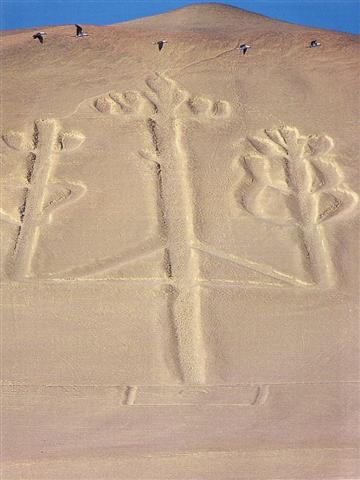 |
The reason for Allen to document the
culmination dates as observed at
nine o'clock in the evening rather
than at the more natural time of
midnight could have been to make the
culmination time of Sirrah coincide
with day 314. Sirrah rose heliacaly
at the cardinal point of 0h and day 314
was another such point. The
culmination times of the other stars
should then follow their Leader star Sirrah - just as
their heliacal right ascension dates
followed 0h.
Notably Acrux
culminated at 21h in May 13, i.e. at a date (5-13)
which could be alluding to 3 * 171 = 27 *
19 (= 513). And 5 * 13 = 65 could have been alluding to *65 = the place
of the left Eye of the Bull (Ain, ε Tauri, cfr
Ga1-1):
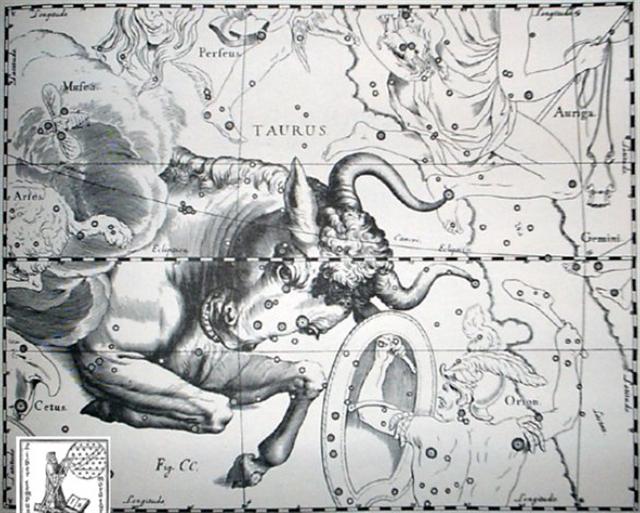
|
Egyptian jubilation |
 |
Phoenician
he |
 |
Greek
epsilon |
Ε (ε) |
|
Wikipedia
points at the Egyptian gesture with arms
held high as a Sign of jubilation, which
may have been the origin (via Phoenician
he) of epsilon.

 |
|
0h |
MARCH 22 (*1) |
23 (82) |
|
no glyph |
 |
 |
|
Ga1-1 |
Ga1-2 |
|
HYADUM II = δ¹ Tauri
(64.2) |
Net-19 (Crow)
AIN (Eye)
= ε Tauri,
θ¹ Tauri, θ² Tauri
(65.7) |
no star listed (66) |
|
May 24 |
25 (145) |
26 (*66) |
|
°May 20 |
21 (*61) |
22 (142) |
|
'April 27 |
28 (118) |
29 (*39) |
|
"April 13 |
14 (104) |
15 (*25) |
In May 14 (5-14) came the rains (te ua)
- or perhaps we should rather understand that they were finished
(reversed). And in Roman times day 54 ('February 23) was
Terminalia. 4 * 13 = 52 and then there should be 2 special
'cards' added, because 378 (synodic cycle of
Saturn) = 54 * 7 = 364 + 14.
 |
 |
|
ua |
Cb2-4 (420) |
... The leap day was introduced as
part of the Julian reform. The day following the
Terminalia (February 23) was doubled, forming
the 'bis sextum - literally 'double sixth',
since February 24 was 'the sixth day before the
Kalends of March' using Roman inclusive counting
(March 1 was the 'first day'). Although exceptions
exist, the first day of the bis sextum
(February 24) was usually regarded as the
intercalated or 'bissextile' day since the third
century. February 29 came to be regarded as the leap
day when the Roman system of numbering days was
replaced by sequential numbering in the late Middle
Ages ...
|
MARCH 11 |
12 |
13 |
3-14 (73 = 365 / 5) |
 |
 |
 |
 |
|
Cb2-4
(420 = 392 + 28) |
Cb2-5 |
Cb2-6 |
Cb2-7 |
|
te ua |
koia ra |
kua tuku ki to mata -
ki tona tukuga |
e kiore - henua - pa
rei |
|
INVISIBLY CLOSE TO THE SUN (helical dates): |
|
May 14 (*54) |
TAU-ONO
*55 (135) |
Temennu-3
(Foundation Stone)
*56 |
MENKHIB = Ζ Persei
*57
PORRIMA
(Γ Virginis) |
|
CLOSE TO THE FULL MOON (and nakshatra dates): |
|
November 13
(*237) |
14 |
15 |
16 (320) |
|
... Later on in this series of
rituals, the Chorti go
through a ceremony they call raising
the sky. This ritual takes place at
midnight on the twenty-fifth of
April and continues each night until
the rains arrive. In this ceremony
two diviners and their wives sit on
benches so that they occupy the
corner positions of the cosmic
square. They take their seats in the
same order as the stones were
placed, with the men on the eastern
side and the women on the west. The
ritual actions of sitting down and
lifting upward are done with great
precision and care, because they are
directly related to the actions done
by the gods at Creation. The people
represent the gods of the four
corners and the clouds that cover
the earth. As they rise from their
seats, they metaphorically lift the
sky. If their lifting motion is
uneven, the rains will be irregular
and harmful ...
|
|
Throwing stick? |
 |
Phoenician
gimel |
 |
Greek gamma |
Γ (γ) |
|
... In its unattested
Proto-Canaanite form, the letter
[gimel] may have been
named after a weapon that was
either a staff sling or a
throwing stick, ultimately
deriving from a Proto-Sinaitic
glyph ... Bertrand Russell
posits that the letter's form is
a conventionalized image of a
camel. The letter may be the
shape of the walking animal's
head, neck, and forelegs [cfr
the way Taurus normally is
depicted]. Barry B. Powell, a
specialist in the history of
writing, states 'It is hard to
imagine how gimel =
'camel' can be derived from the
picture of a camel ... The word
gimel is related to
gemul, which means
'justified repayment', or the
giving of reward and punishment.
The Swedish word gammal
means 'old' (and dry like a
stick).
 |
|
MARCH 15 |
16 |
17 |
 |
 |
 |
|
Cb2-8 (424 = 300 + 124) |
Cb2-9 (425 = 392 + 33) |
Cb2-10 |
|
Niu |
moe te goe |
|
INVISIBLY CLOSE TO THE SUN (helical dates): |
|
May 18 |
19 (*242 - 183 = 2 * 29½) |
20 (60) |
| |
|
COR
CAROLI (α Canum Ven.) |
|
CLOSE TO THE FULL MOON (and nakshatra dates): |
|
November 17 (321) |
(*242 =
355 - 33 - 80) |
19 |
| |
SCHEDIR
(α Cassiopeiae) |
|
 |
The Arabs had a pair of water spouts
('fishes', 'serpents'), one at the
beginning of the
'House' and one at its end:
|
24 |
Al Fargh al Mukdim |
Fore Spout |
α Pegasi (Markab), β (Scheat) |
March 5 (429) |
|
25 |
Al Fargh al Thāni |
Rear Spout |
γ Pegasi (Algenib),
α Andromedae (Sirrah) |
March 21 (445) |
...
Behind me, towering almost 100 feet into the
air, was a perfect ziggurat, the Temple
of Kukulkan. Its four stairways had 91
steps each. Taken together with the top
platform, which counted as a further step, the
total was 365. This gave the number of complete
days in a solar year. In addition, the geometric
design and orientation of the ancient structure
had been calibrated with Swiss-watch precision
to achieve an objective as dramatic as it was
esoteric: on the spring and autumn equinoxes,
regular as clockwork, triangular patterns of
light and shadow combined to create the illusion
of a giant serpent undulating on the northern
staircase ...
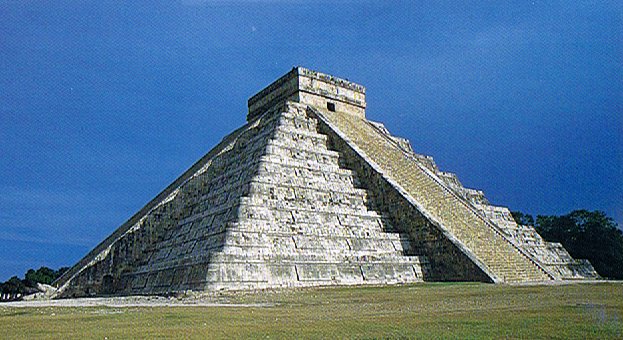
Although the ancient Olmecs
had a single Serpent with a Knot tied around his
middle, securing tail ('furrow') and front
('frond') to keep together:

Clearly a birth was preceded by a release
of water.
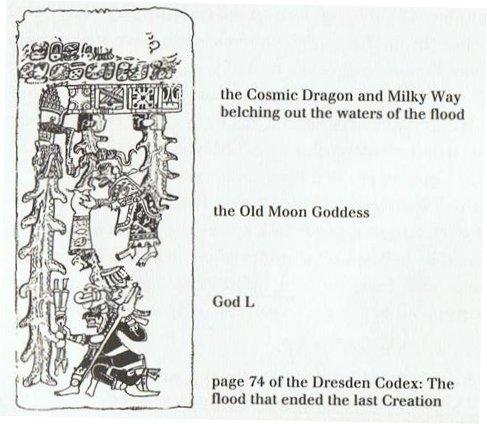
... The
men on board the royal canoe looked out from
Varinga Te Toremo (the northeastern cape of the
Poike peninsula). Then they saw the canoe of
the queen, the canoe of Ava Rei Pua, as it
reached Papa Te Kena (on the northern shore,
east of Hanga Oteo). Honga came and
gazed in the direction below (i.e., toward the
west). He called out to the noteworthy ruler (?
ariki motongi) Hotu: 'There is the canoe
of the queen! It will be the first one to land!' At
this news King Hotu replied to Honga,
'Recite (rutu) ('powerful incantations') as
though the ten brothers of the chief (ariki
maahu) were one whole (?).' The ten recited
with all their might. This is what they recited:
'Let all movement (? konekone) cease!' They
recited and sailed on swiftly: Honga, Te
Kena, Nuku Kehu, Nga Vavai, Oti,
Tive (corrected for 'Sive'), Ngehu,
Hatu, Tuki, and Pu (corrected
for 'Bu'). He worked mana in the
fishing grounds. (Naming of two fishing grounds.)
(E:80)
When
Hotu's canoe had reached Taharoa, the
vaginal fluid (of Hotu's pregnant wife)
appeared. They sailed towards Hanga Hoonu,
where the mucus (kovare seems to refer to the
amniotic sac in this case) appeared. They sailed on
and came to Rangi Meamea, where the
amniotic fluid ran out and the contractions began.
They anchored the canoe in the front part of the
bay, in Hanga Rau. The canoe of Ava
Rei Pua also arrived and anchoraged. After
Hotu's canoe had anchoraged, the child of
Vakai and Hotu appeared. It was Tuu
Maheke, son of Hotu, a boy. After the
canoe of Ava Rei Pua had also arrived and
anchoraged, the child of Ava Rei Pua was
born. It was a girl named Ava Rei Pua Poki
... (E:81)
Counting from
the culmination of Sirrah in day 314 to heliacal
Alcyone in May 16 (136) resulted in a 5 days'
difference. 366 + 136 - 314 = 188 = 183 + 5. The
culmination of Sirrah at 21h could therefore be a
sign of the Foundation Stone (Temennu) which
would rise
with the Sun 5 days later.
... Nut, whom the Greeks sometimes identified with
Rhea, was goddess of the sky, but it was debatable
if in historical times she was the object of a
genuine cult. She was Geb's twin sister and, it was
said, married him secretly and against the will of
Ra. Angered, Ra had the couple brutally separated by
Shu and afterwards decreed that Nut could not bear a
child in any given month of any year. Thoth,
Plutarch tells us, happily had pity on her. Playing
draughts with the Moon, he won in the course of
several games a seventy-second part of the Moon's
light with which he composed five new days. As these
five intercalated days did not belong to the
official Egyptian calendar of three hundred and
sixty days, Nut was thus able to give birth
successively to five children: Osiris, Haroeris
(Horus), Set, Isis and Nepthys
...
M45 (Messier
45, the Pleiades) began to rise with the Sun in May 15,
which was day
45 counted from April 1. Day 320 (6 days after
November 10) came 45 days earlier than December 31 (when Alcyone, Pleione, and Atlas
culminated at 21h). The reason why 'the six of them' was
changed (in Manuscript E) to 'the four of them', can
now be guessed:
... The
canoes of Ava Rei Pua and of Hotu were
seen near the (off-shore) islets. On the fifteenth
day of the month of October (tangaroa uri)
the canoe of Hotu and the canoe of Ava Rei
Pua landed. On the fifteenth day of the month of
October (tangaroa uri), Nonoma
left the house during the night to urinate outside.
At this point Ira called out to Nonoma,
'Look at the canoe!' Nonoma ran, he quickly
went to Te Hikinga Heru (a ravine in the side
of the crater Rano Kau) and looked around.
There he saw the double canoe way out near the
(offshore) islets, and the two (hulls of the canoe)
were lashed together. He ran and returned to the
front of the house. He arrived and called into the
house: 'Hey you! This canoe has arrived during the
night without our noticing it!' Ira asked
Nonoma, 'Where is the canoe, which you say is
lying out there (in the water)?' Nonoma's
voice came back: 'It is out there (in the water)
close to the (offshore) islets! There it lies, and
the two (hulls) are lashed together.' The four of
them (corrected for 'the six of them') went out and
picked up leaves (on branches) to
give signals. They picked them up, went and arrived
at Te Hikinga and saw the canoe. Raparenga
got up, picked up the leaves, took them in his
hands, and waved, waved, waved, waved ...
When 'the four
of them' had guided the Sun king safely ashore then the
4 planets (Explorers) - i.e. excepting Kuukuu
(Mars) who had been
fatally struck by the flipper of the Turtle and Makoi
(Saturn) who would remain on Easter
Island - had completed their task and could
go
home.

They had
in a way successfully performed the equivalence of
the Chorti diviners' ceremony of raising the
sky.
... Ira,
Raparenga, Uure, Nonoma,
and Ringiringi got up and left
the 'Dark abyss of Hau Maka' (i.e.,
Rano Kau), arrived at
Hanga Te Pau, put the
canoe into the water, and sailed off to
Hiva, to Maori. Ira
left on the twenty-fifth day of the
month of October (Tangaroa Uri).
(E:86)

298 (Tangaroa Uri 25) + 45 = 343 = 7 * 7 * 7
= "December 9, and 343 - 16 = 327 ("November
23), where at the time
of Gregory XIII Nunki - the star who announced the
arrival of the Sea - had risen heliacally with
Sirius close to the Full Moon:
|
OCTOBER 26 |
27 (300) |
28 |
29 |
30 |
31 (*224) |
 |
 |
 |
 |
 |
 |
|
Ga8-16 |
Ga8-17 (220) |
Ga8-18 |
Ga8-19 |
Ga8-20 |
Ga8-21 |
|
ζ Pavonis
(283.4), λ Cor. Austr.
(283.6),
DOUBLE DOUBLE = ε Lyrae
(283.7),
ζ Lyrae
(283.8) |
South Dipper-8
Φ Sagittarii
(284.0), μ Cor. Austr.
(284.6), η Cor. Austr.,
θ Pavonis
(284.8) |
SHELIAK = β Lyrae,
ν Lyrae (285.1), ο Draconis
(285.5).
λ Pavonis
(285.7)
ATLAS (27 Tauri) |
χ Oct. (286.0),
AIN AL RAMI = ν Sagittarii
(286.2),
υ Draconis (286.4), δ Lyrae
(286.3),
κ Pavonis
(286.5),
ALYA = θ Serpentis
(286.6) |
ξ Sagittarii (287.1),
ω Pavonis
(287.3), ε Aquilae, ε Cor.
Austr.,
SULAPHAT = γ Lyrae
(287.4), λ Lyrae (287.7),
ASCELLA = ζ Sagittarii,
BERED = i Aquilae (Ant.)
(287.9) |
Al Na'ām-18 /
Uttara Ashadha-21
NUNKI
= σ Sagittarii
(288.4), ζ Cor. Austr.
(288.5),
MANUBRIUM = ο Sagittarii
(288.8), ζ Aquilae (288.9) |
|
December 29 |
30 (*284) |
31 |
January 1 |
2 |
3 (368) |
|
°December 25 |
26 (*280) |
27 |
28 |
29 |
30 (364) |
|
'December 2 (*256) |
3 |
4 |
5 |
6 |
7 (341) |
|
"November 18 (*242) |
19 |
20 |
21 |
22 |
23 (327) |
|
NOVEMBER 1 |
2 (306) |
3 (*227) |
4 |
5 |
 |
 |
 |
 |
 |
|
Ga8-22 |
Ga8-23 |
Ga8-24 (227) |
Ga8-25 |
Ga8-26 |
|
19h (289.2)
λ Aquilae (Ant.) (289.1), γ
Cor. Austr (289.3),
τ Sagittarii
(289.4), ι Lyrae (289.5), δ
Cor. Austr. (289.8)
|
Al Baldah-19
AL BALDAH = π Sagittarii,
ALPHEKKA
MERIDIANA = α Cor. Austr.
(290.1), β Cor. Austr.
(290.2) |
ALADFAR = η Lyrae
(291.1),
NODUS II = δ Draconis
(291.5), ψ Sagittarii
(291.6), τ Draconis (291.7),
θ Lyrae (291.8) |
ω Aquilae (292.1),
ρ Sagittarii
(292.6), υ Sagittarii
(292.7) |
π Draconis,
ARKAB PRIOR = β¹ Sagittarii
(293.0),
ARKAB POSTERIOR = β²
Sagittarii,
ALRAMI = α Sagittarii
(293.2),
χ Sagittarii
(293.6) |
|
January 4 |
5 (*290) |
6 |
7 (372) |
8 |
|
°December 31 |
°January 1 |
2 (*287) |
3 (368) |
4 |
|
'December 8 |
9 |
10 (*264) |
11 (345) |
12 |
|
"November 24 |
25 (329) |
26 (*250) |
27 |
28 |

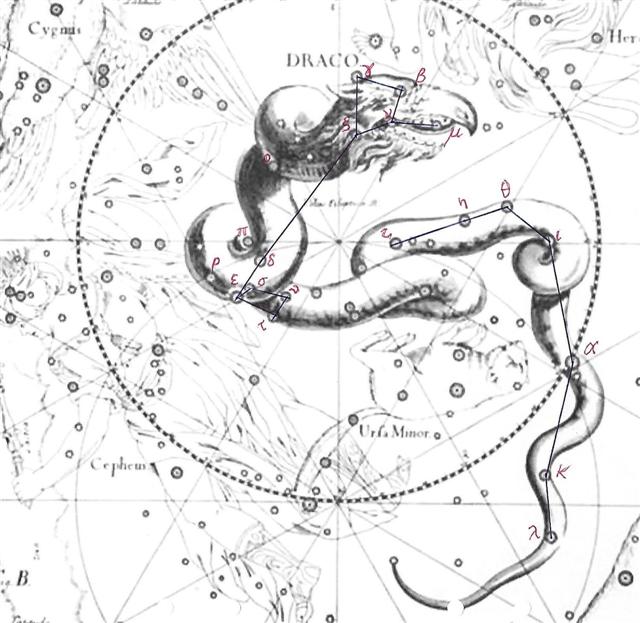
|






























